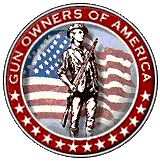On September 13 and 14, 1814, British forces attacked the City of Baltimore by land and sea in the War of 1812. As local forces repelled the British advance ashore, naval forces attacked Fort McHenry at the entrance to the city's inner harbor. As home to a fleet of privateers, that had captured or sank 500 British ships during the war, Baltimore was a worthwhile prize. At 6:30 AM on the 13 September, the British initiated a 25 hour bombardment using over 1,500 rounds of cannon shot and shell and Congreve rockets. When Georgetown lawyer, Francis Scott Key, witnessed the fort's flag still flying at dawn the next morning he was moved to write a poem.

1775 - The New England Pine Tree Flag - was flown at the Battle of Bunker (Breed's) Hill. It was used almost 90 years before then.
 |
| Continental Navy Jack |
1775-1776 - The Continental Navy used this flag on its inception combining two American symbols of liberty.
Jan. 1, 1776 - Grand Union was flown over Prospect Hill, overlooking Boston.
 |
| Betsey Ross Flag |
Jun. 14, 1777 - Congress authorized the first flag act which stated, "That the flag of thirteen United States be 13 stripes alternate red and white, that the union be 13 stars, white in a blue field representing a new constellation." The legislation lacked specifics as to how the stars should be arranged.
 |
| Cowpens Flag |
1777 - This flag was carried at the Battle of Cowpens in South Carolina. It now hangs in the Maryland State House.
 |
| Bennington Flag |
Aug. 1777 - The Bennington Flag, or the Fillmore Flag, flew at the Battle of Bennington. Today it is in Vermont's Bennington Museum.
How to Display the Flag
When displayed over the middle of an East-West running street, the flag should be suspended vertically with the union to the north.
When displayed with another flag, against a wall with crossed staffs, the flag should be on the right (viewer's left) with staff in front.
When flown at half-staff, the flag should first be hoisted to the top for an instant, then lowered. It should also be raised to the top before being lowered for the day.
The flag should always be at the peak when flown on the same halyard with flags of states, cities, localities or pennants of societies. When flown from adjacent staffs the U.S. flag should be hoisted first and lowered last. No flag should be placed above the American flag or to the right of it.
 1775 - The New England Pine Tree Flag - was flown at the Battle of Bunker (Breed's) Hill. It was used almost 90 years before then.
1775 - The New England Pine Tree Flag - was flown at the Battle of Bunker (Breed's) Hill. It was used almost 90 years before then.

























